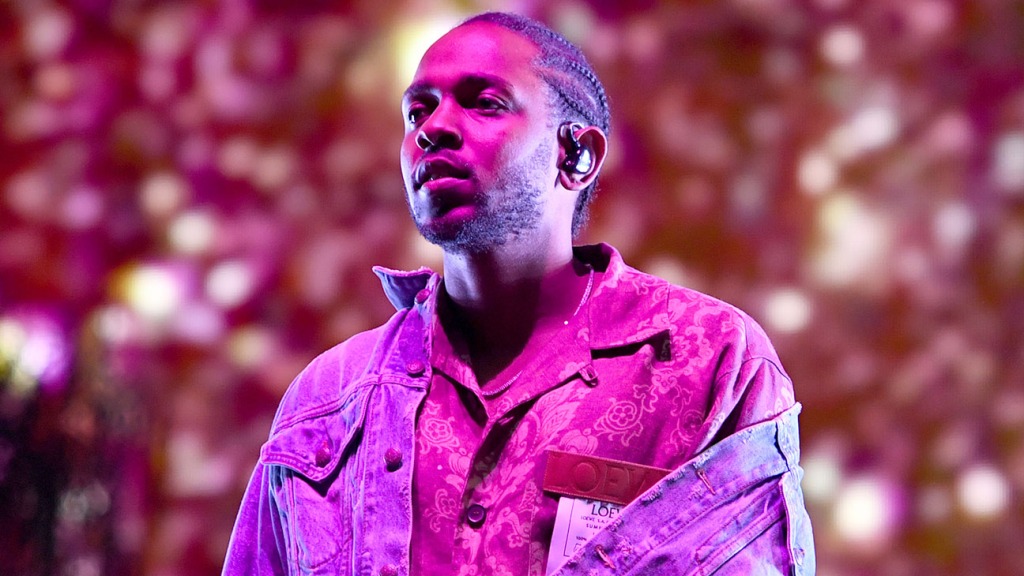Kendrick Lamar’s “The Heart Part 5” music video welcomes a new collaboration from the rapper with Hollywood’s most famous — and despised — parodists: South Park‘s Trey Parker and Matt Stone. With that partnership, it’s no surprise that celebrities, both alive and dead and some of whom are no strangers to controversies of their own, made unexpected appearances in the video using deepfakes.
In the clip, the rapper wields the controversial technology to transform into Will Smith, Jussie Smollett, OJ Simpson, Kobe Bryant and Nipsey Hussle. It’s unlikely the celebrities consented to being in the video, raising the question of whether Lamar and production house pgLang are legally in the clear for using their likenesses.
Deepfakes use a form of artificial intelligence called deep learning to manipulate faces and voices. Utilizing different images and videos of an individual at different angles, the technology allows for the creation of fake recordings that appear real.
Hollywood — and the government — are still grappling with deepfakes, which haven’t been widely adopted yet since alternatives like CGI are still better in many cases. There’s a YouTube channel dedicated to recreating famous movie scenes with different actors. One video features Sylvester Stallone in the place of Macaulay Culkin in Home Alone; another features Bruce Lee in the place of Keanu Reeves in The Matrix.
There are currently no copyright laws designed to combat the use of deepfakes. In fact, they allow them in most instances.
Deepfakes likely to fall under the “fair use” exception to copyright infringement. The doctrine allows for unlicensed use of copyrighted works under limited circumstances, like comment, criticism and news reporting. Four factors determine whether a work qualifies: (1) purpose and character of the use, (2) nature of the copyrighted work, (3) amount and substantiality of the portion taken, and (4) effect of the use upon the potential market. . The first factor extends protection for works of “transformative use,” defined as when the purpose of a copyrighted work is altered to create something with a new meaning or message.
“Looking at it from the perspective of how [the deepfake] was used in the creative process, you have to focus on the different meaning and message that the resulting use ends up communicating,” says veteran copyright attorney Aaron Moss, chair of Greenberg Glusker’s litigation department.
Lamar says “The Heart Part 5” is about perspective. He opens with the line, “As I get a little older, I realize life is perspective/And my perspective may differ from yours.” From there, he uses transformations enabled by deepfakes to talk about various issues from the viewpoints of the people he morphs into.
Taking on the face of Smith, Lamar references the actor taking to the stage of the Academy Awards to slap Chris Rock for a joke aimed at his wife. He raps, “In the land where hurt people hurt more people/F— callin’ it culture,” presumably as an indidictment on the massive discussion the incident sparked about the couple’s personal lives.
Continuing on the theme of Black representation, Lamar transforms into Smollett and sings about the actor’s desire to “wanna represent for us.” He’s referencing Smollett staging a racist hate crime to boost his career.
Copyright attorney Alan Friedman, a partner at Fox Rothschild, says that the deepfakes in the video appear “highly transformative” and that “fair use would be a strong defense to a copyright challenge.”
Since copyright laws don’t account for intent, they also protect malicious content like parodies, which Lamar’s video could be categorized under and has been deemed transformative use.
Courts have historically taken a liberal position on protecting works as fair use. Since 2010, the win rate on a transformative use defense has been roughly 63 percent, according to University of New Hampshire School of Law professor Jiarui Liu.
A major factor on the lopsided nature of the split has been the 2nd US Circuit Court of Appeals’ 2013 decision in Cariou v. Prince. In that case, the appeals court lowered the bar for fair use by finding that works can be transformative simply by presenting a new aesthetic.
The reach of this defense will be tested when the US Supreme Court considers a separate case concerning a series of painting by Andy Warhol that relied on existing photos of Prince as a template.
But even without fair use protection, the celebrities who appear in Lamar’s video likely don’t have recourse under copyright law because they don’t own the underlying photos and videos that were used to make the deepfakes.
Deepfakes are generated by feeding a program images and recordings of an individual, which are then used to recreate authentic-looking renderings. Deepfakes of popular celebrities often look smoother because of the availability of inputs that the program can learn from.
“If you’re using 2,000 different images of Kobe to train a neural network, to be able to say ‘I took that one and I have a copyright interest’ is difficult if not impossible,” Moss says. “You can have copyrights to photos but not your likeness. You can have copyrights to soundbites but not your voice.”
Celebrities in deepfakes can choose to sue for defamation, an exceedingly difficult claim for people in the public interest to win. They could also choose to pursue a related claim for false light, or recklessly creating a harmful and false implication about someone in a public setting.
Other possibilities include claims for intentional infliction of emotional distress, which would require proof of “extreme and outrageous conduct,” and right of publicity, which mandates compensation as a result of the misappropriation of someone’s likeness for commercial gain.
